AAWT Track Guide
The summary: The Australian Alps Walking Track (AAWT) is a remote 680km walk between Walhalla (VIC) and Tharwa (ACT). It traverses large sections of the nicest high country on mainland Australia, including the highest point in Australia, Mount Kosciuszko. Passing through terrain that is inaccessible by vehicle, the track offers the potential to explore some of the most remote and rugged areas within Victoria, NSW, and the ACT. Although the popularity of the AAWT is increasing, the remote nature of the track means it’s possible to spend days at a time without seeing other hikers.
As is the nature of remote hikes, the AAWT requires a bit more planning than most other hiking trails within Australia. The terrain is rugged, demanding, and track quality varies wildly. There are frequent sections of slow overgrown trails, where hikers must be competent navigators and a GPS can be useful. A significant time commitment is generally required to organise, place, and collect food drops. Finding water can be tricky, and there are only three towns along the track that you can easily detour into. Additionally, in some sections there are unnecessarily long periods of firetrail walking where further track investment could improve the hiker experience.
These physical, mental, and logistical challenges form part of the character of the AAWT. Accordingly, hikers are rewarded with some of Australia’s finest alpine scenery, the opportunity to visit historic huts, many side trips to investigate, and a sense of peace and quiet that is becoming much harder to find on Australia’s other premier walking trails.
If you want to walk a long distance trail in Australia but don’t have much experience, the Larapinta Trail and Bibbulmun Track also offer excellent (different) scenery with fewer challenges and would be great preparation for the AAWT.
When to walk
The best times to walk the AAWT are from mid-spring to early autumn. Water is more readily available during spring, however colder temperatures and rain are more frequent. Conversely, walking later in summer can bring finer weather, but there is increased bushfire risk and water may be harder or impossible to find. Autumn is also possible and largely depends on recent rainfalls after summer.
The track can also be walked during winter, but it is not common. A winter traverse is significantly harder and requires snow safety skills. Skis or snow shoes are normally needed to traverse alpine regions. Navigation is more challenging and the track is prone to harsher weather conditions. Additionally, some access roads are closed over winter, making the track more remote.






Track difficulty (pros and cons)
Things that could make the track easier or more enjoyable:
- The track traverses some of the most spectacular alpine regions on mainland Australia.
- The track is remote and you typically see very few people (note that this may be considered a con for some people).
- There is an abundance of side trips and detours, allowing each walker to personalise their trip if they desire.
- Alpine huts add character and history.
- There is a comprehensive guide book.
- There is very little walking along farm land.



Things that could make the track more difficult or less enjoyable:
- The track is overgrown in many places.
- The route is not always well marked and navigation can be challenging.
- The weather can be unpredictable in alpine regions (you can get snow storms in summer).
- The terrain can be very steep.
- There are lots of fire trails.
- You will likely need to place food drops (this requires both the time to place them, as well as time to collect them after you have finished).
- There is no public transport to the southern terminus, Walhalla.



Cost
Compared to other walks, the AAWT is relatively cheap. This is because there are only two towns near the track, so it is difficult to splurge on accommodation and food in town. Aside from purchasing hiking gear, the primary costs associated with walking the AAWT are buying and placing the food drops, and accommodation along the way.
Food: $350-$400 pp. This will depend on how fast you walk and much food you plan to eat each day. This estimate comes from Maddie’s plan to walk the track in approx. 25 days, with roughly 800g of food per day. This cost also includes extra food placed in the drops as a buffer and other miscellaneous items like sunscreen.
Car fuel: $300-$400. This will depend on how many food drops you plan to use, as well as the price of petrol and the fuel efficiency of your car. This estimate is based on the price we paid to place and pick up 12 food drops in January 2022.
Accommodation: $0-$200 per night. This depends on if/where you plan to stay at either of the two towns near the track. Booking in advance can ensure you get cheaper options.
Gear
A normal three season gear list appropriate down to -5°C is suitable for most AAWT hikers (even in summer). You can find what we would take for the AAWT here.


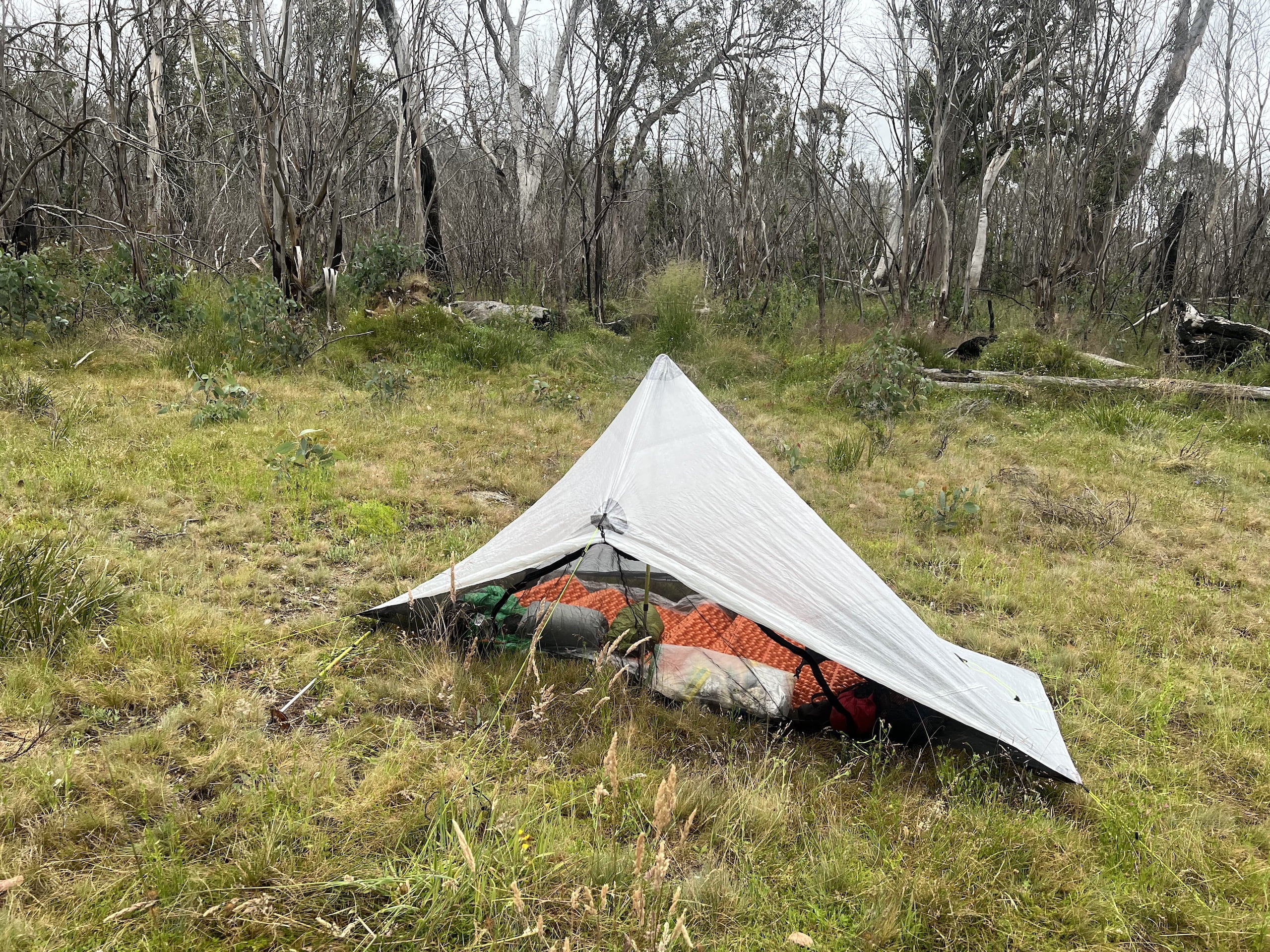
Section distance and elevation stats
The AAWT is between 650km and 690km long (depending on the source). The track has an average elevation change of 81.7m/km. Therefore, on average, there is ~41m up and ~41m down per km. This is pretty steep for a long hike in Australia. This can be seen by comparing to other popular walks:
Comparing the steepness and distance of famous hikes
| Walk | Distance (km) | Elevation Change (m/km) | Distance (mi) | Elevation Change (ft/mi) | Location |
|---|---|---|---|---|---|
| Bibbulmun Track | 947 | 44.7 | 588.4 | 236 | Australia (WA) |
| Cape to Cape Track | 126 | 37.7 | 78.3 | 199.1 | Australia (WA) |
| Larapinta Trail | 221.8 | 49.1 | 137.8 | 259.2 | Australia (NT) |
| Heysen Trail | 1077 | 40.4 | 669.2 | 213.3 | Australia (SA) |
| Australian Alps Walking Track (AAWT) | 680 | 81.7 | 422.5 | 431.4 | Australia (VIC, NSW, ACT) |
| Six Foot Track | 44 | 70 | 27.3 | 369.6 | Australia (NSW) |
| Great North Walk | 268 | 53.1 | 166.5 | 280.4 | Australia (NSW) |
| Great Ocean Walk | 96 | 62 | 59.7 | 327.4 | Australia (VIC) |
| Great South West Walk | 252.9 | 32.6 | 157.1 | 172.1 | Australia (VIC) |
| South Coast Track | 73.4 | 77.7 | 45.6 | 410.3 | Australia (TAS) |
| Overland Track (no side trips) | 71 | 58.7 | 44.1 | 309.9 | Australia (TAS) |
| Western Arthurs (full loop) | 76.1 | 111.9 | 47.3 | 590.8 | Australia (TAS) |
| Three Capes Track | 39.5 | 82.3 | 24.5 | 434.5 | Australia (TAS) |
| Te Araroa | 3000 | 44.2 | 1864.1 | 233.4 | New Zealand |
| Pacific Crest Trail | 4265 | 65.6 | 2650 | 346.4 | USA (CA, OR, WA) |
| Appalachian Trail | 3364 | 77.6 | 2090.3 | 409.7 | USA (East Coast) |
Additionally, there is huge variation in the difficulty of sections along the AAWT. This can be seen by comparing the distance and average elevation change for each section:
| Section | Distance (km) | Elevation Change (m/km) | Distance (mi) | Elevation Change (ft/mi) |
| Walhalla – Mt Victor | 79.1 | 85.2 | 49.2 | 450.0 |
| Mt Victor – Rumpff Saddle | 35.2 | 96.4 | 21.9 | 508.9 |
| Rumpff Saddle – Mt Hotham | 127.1 | 114.7 | 78.9 | 605.9 |
| Mt Hotham – Omeo Highway | 73.6 | 82.0 | 45.7 | 432.8 |
| Omeo Highway – Benambra-Corryong Road | 28.5 | 97.3 | 17.7 | 513.5 |
| Benambra-Corryong Road – Dead Horse Gap | 120.4 | 71.2 | 74.8 | 375.9 |
| Dead Horse Gap – Kiandra | 114.6 | 59.5 | 71.2 | 314.1 |
| Kiandra – Tharwa | 107.1 | 60.2 | 66.5 | 318.0 |
In terms of track difficulty, the hardest parts of the AAWT are from Walhalla to Mt Hotham. After that, the track quality generally improves and progress is easier (but there are still long steep climbs). Once you cross the border from Victoria into NSW (between Benambra-Corryong Road and Dead Horse Gap), the track becomes much faster as you essentially follow flat(ish) fire trails all the way to the end!


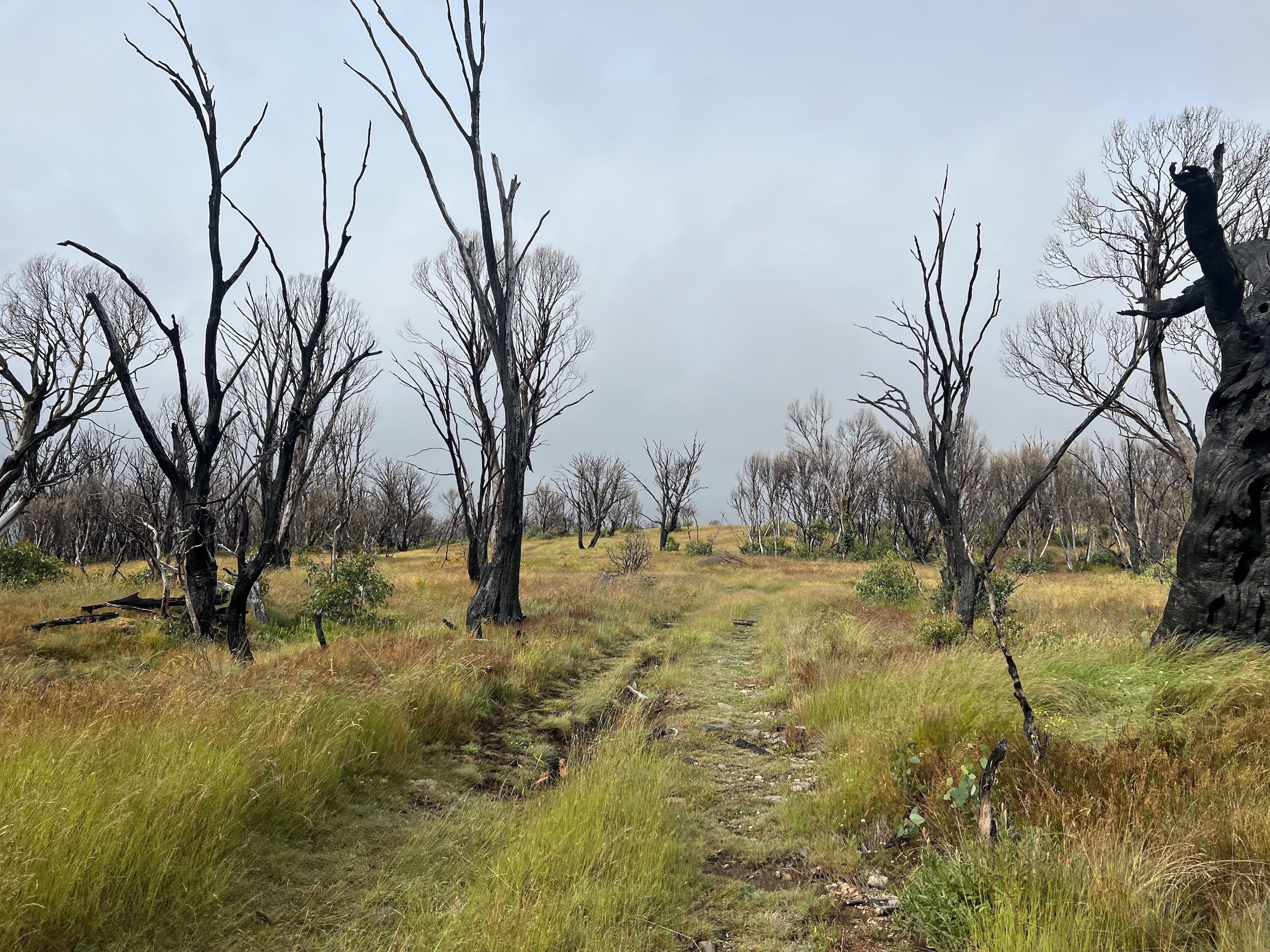

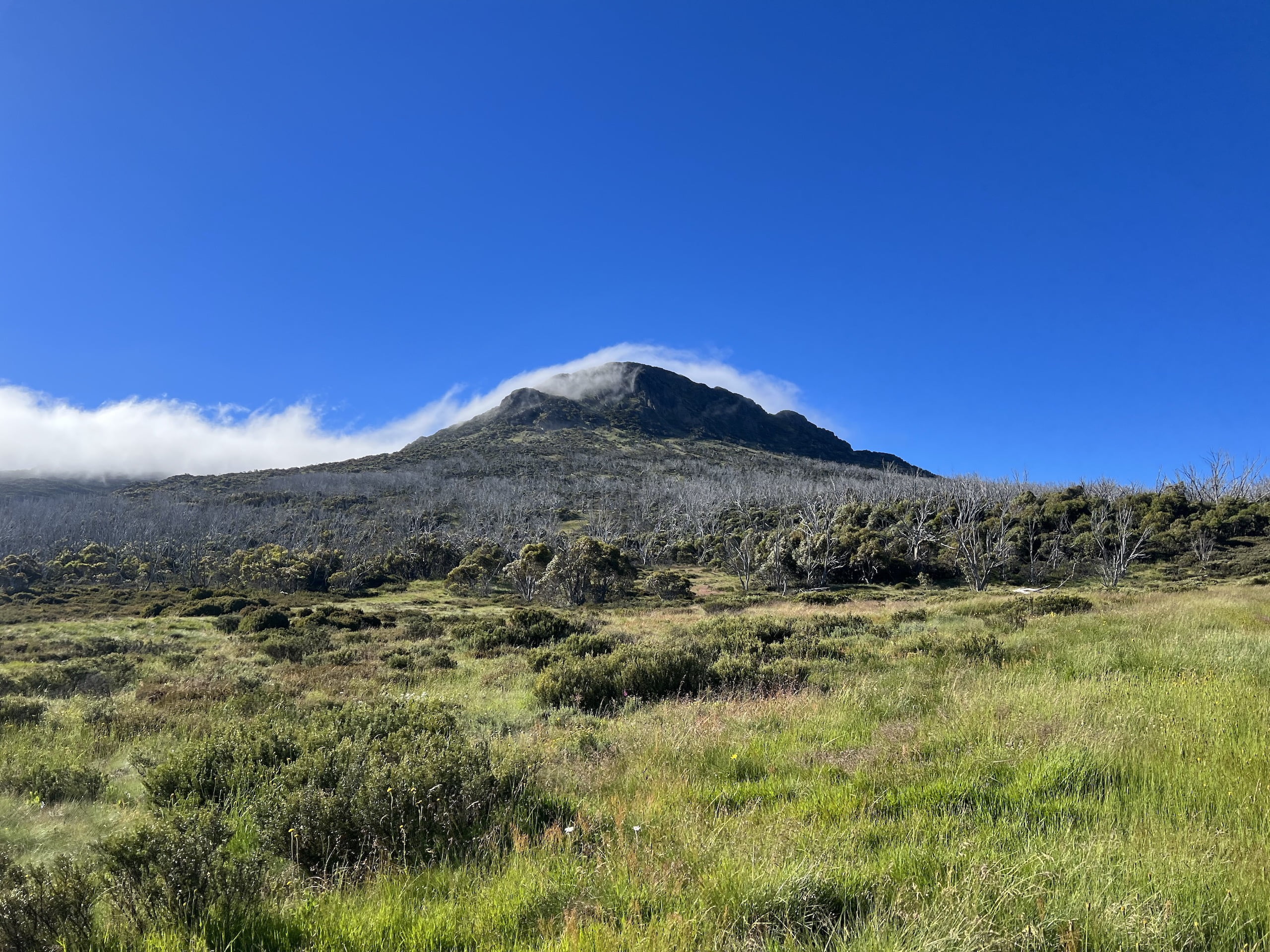

Resupply options
The AAWT does not pass through any towns, but it is possible to take ~5km detours into the ski towns of Mt Hotham (at ~242km S→N, largely closed outside winter), Falls Creek (at ~269km S→N, open all year round) and Thredbo (at ~445km S→N, open all year round).
Therefore, most people choose to resupply by placing food drops along the track or getting friends/family to meet them along the way. Depending on the time of year you plan to walk, food drops may need to be placed months in advance (as some roads close over winter).
Some common food drop locations are (distances calculated from a 685km long GPX file):
| Drop location | Distance from Walhalla (km/mi) | Access type | Directions | Comments |
|---|---|---|---|---|
| Stonach’s Camp (Thompson Valley Road) | 48.3/30.0 | 2WD (in good weather). | From Erica take the Thomson Valley Road and keep left at the Thomson Dam Access Rd (dirt). Follow the dirt road to the intersection with the AAWT. | |
| Fiddlers Green (Mt Selma Road) | 84.3/52.4 | 2WD (in good weather). | From Erica take Thomson Valley Road and keep straight to turn onto Thomson Dam Access Rd (dirt). Follow until turning onto Walhalla Road (dirt) followed by Mt Selma Road (dirt). | The AAWT follows both Walhalla and Mt Selma for a total of 4.5km, so can place drop anywhere along here. |
| Jamieson-Licola Road | 107.8/67.0 | 2WD (in good weather). | Take Jamieson-Licola road (dirt) to intersection with AAWT. | |
| Vallejo Gantner Hut | 170.3/105.8 | 4WD & hike. | From Licola follow Tamboritha Road. At Arbuckle Junction turn onto Howitt Road (dirt) to Mt Howitt Carpark (sometimes possible in 2WD with good clearance and in dry conditions). Hike 4.7km to Vallejo Gantner Hut (133m ↑, 150m ↓). | This is a 1.2km (67m ↑, 111m ↓) detour off the AAWT, but it’s a nice hut and makes a good location for a food drop and detour for water. |
| Camp Creek Campground near Mt Speculation | 177.7/110.4 | 4WD. | Best approach is likely from Lake Cobbler but can change. Take Speculation Road (dirt) to Camp Creek carpark. A good 4WD is needed as the track can be very rough. | The official track doesn’t descend into Camp Creek, however this route is overgrown and therefore most people descend into Camp Creek and follow Speculation Road anyway (meaning it isn’t a detour to the food drop). The detour is also important to get water. |
East Buffalo/East Riley Road intersection | 202.5/125.8 | 4WD. | From Myrtleford, follow Buffalo River Road until it turns into East Buffalo Road (dirt) until the intersection with AAWT. | |
| Blowhard Hut | 237.2/147.4 | Sealed road. | Take Great Alpine Road to Blowhard Hut. | Due to its proximity to a main road, it’s a good idea to hide the drop well. |
| Langford Gap | 269/167.1 | Sealed road. | Take Bogong High Plains Road to Langford Gap. | |
| Omeo Highway | 315.2/195.9 | Sealed road. | Take Omeo Hwy to intersection with AAWT. | |
| Taylor’s Crossing | 334.4/207.8 | 2WD (in good weather). | Take Benambra-Corryong Road (dirt) and turn onto Tablelands Road (dirt) and follow to intersection with AAWT. | Note that this is a popular spot so hide food drop well or place at Benambra-Corryong Road instead. |
| Benambra-Corryong Road | 343.8/213.6 | 2WD (in good weather). | Take Benambra-Corryong Road (dirt) to intersection with AAWT. | |
| Buenba Road | 371.2/230.7 | 4WD. | Follow Beloka Road (dirt, turns into Buenba Road) to intersection with AAWT. | Possible in 2WD with good clearance and in dry conditions. |
| Mt Hope Road | 375.33/233.2 | 4WD. | Turn off Buenba Road (dirt) onto Mt Hope Road (dirt) to intersection with AAWT. | Possible in 2WD with good clearance and in dry conditions. |
| Cowombat Trail | 405.4/251.9 | 2WD (in good weather) & hike. | Take Limestone Road (dirt) to intersection with Cowombat Track. Hike 1.3km (11m ↑, 16m ↓) along the dirt fire road to intersection with AAWT. | |
| Dead Horse Gap | 463.8/288.2 | Sealed road. | Take Alpine Way to Dead Horse Gap. | Might want to walk up along Cascade Trail (uphill towards Cowombat Trail) to place food drop as this is a popular road. |
| O’Keefes Hut | 528.8/328.6 | Sealed road & hike/bike. | Take Tooma Road to Round Mountain Carpark. Hike/bike into O’Keefes Hut along Round Mountain Trail and Grey Mare Trail. Clockwise route is 15.2km one way (542m ↑, 509m ↓). Anticlockwise route is 19.0km one way (382m ↑, 299m ↓). | Clockwise route is possible on a mountain bike and there is a river crossing and can be muddy when wet. Anticlockwise route is easier and is doable on a gravel bike but would be nicer on a mountain bike. |
| Selwyn Trail junction with Tabletop Mountain Trail North | 571.6/355.2 | Sealed road & hike. | Turn off Snowy Mountains Hwy onto Link Road, followed by Kings Cross Road to Selwyn Snowfields. Hike 2.7km (43m ↑, 26m ↓) along Selwyn Trail to intersection with AAWT (Tabletop Mountain Trail North). | This is an alternative to placing a food drop at Kiandra as it may be challenging to hide there. |
| Kiandra | 577.4/358.8 | Sealed road. | Take Snowy Mountains Hwy to Kiandra. | May be difficult to hide food drop as there is not much vegetation. |
| Ghost Gully Camp | 609.2/378.5 | 2WD (in good weather). | Take Snowy Mountains Hwy and turn onto Long Pain Road (dirt) before turning onto Port Phillip Trail (dirt). | No vehicle access in winter (from the long weekends in June to those October). |
| Blue Waterholes Campground | 625.2/388.5 | 2WD (in good weather). | Easiest 2WD access is following Snowy Mountains Highway. Turn onto Long Plain Road (dirt), and then take Blue Waterholes Trail (dirt) until reaching Blue Waterholes Campground. | No vehicle access in winter (from the long weekends in June to those October). Note that this campsite is 3.1km (37m ↑, 102m ↓) off the AAWT, but it’s a nice detour. |
| Pocket Saddle Road | 631.8/392.6 | 4WD & hike. | Follow Snowy Mountains Highway and turn on Tantangara Road (dirt). Follow until it turns into Pocket Saddle Road (dirt) until you reach the gate. Hike/bike 1.3km (35m ↑, 9m ↓) along the dirt fire road until it intersects with the AAWT. | Possible in 2WD with good clearance and in dry conditions. |
| Corner of Cotter Hut Road and Link Track | 660.6/410.5 | Sealed road & hike. | Follow Boboyan Road. The road is sealed if coming from the north, and dirt if coming from the south (2WD in good weather). Turn onto Orroral Road (sealed) and follow to Orroral Valley Tracking Station. Hike 1.4km (28m ↑, 17m ↓) to intersection between Cotter Hut Road and Link Track. | Orroral Road is currently closed (April 2022). |
| Honeysuckle Campground | 668.8/415.6 | Sealed road. | Follow Boboyan Road. The road is sealed if coming from the north, and dirt if coming from the south (2WD in good weather). Turn onto Apollo Road (sealed) and follow to Honeysuckle Campground. |
As you can see above, some food drop locations require 4WD vehicle access, but it is possible to place enough drops with a 2WD in dry conditions. Below we list a few possible options for all food drop locations, depending on how many you want.
Minimal effort driving (2WD good weather):
Jamieson-Licola Rd (107.8km), Blowhard Hut (237.2km), Benambra-Corryong Rd (343.8km), Dead Horse Gap/Thredbo (463.8km), Kiandra (577.4km). These five drops are all accessible with a 2WD in dry conditions, with Jamieson-Licola Rd and Benambra-Corryong Rd being the only dirt roads. The carries are evenly spaced in terms of distance at ~110-120km long. However, the first two food carries out of Walhalla (assuming walking S→N) could take 6 days or so which is still quite a lot of food to carry in the hardest parts of the track.
Emphasis on reducing pack weight (2WD good weather):
If you are wanting to reduce your pack weight further (especially between Walhalla and Blowhard Hut), this is the schedule we would recommend.
Fiddler’s Green (84.3km), Vallejo Gantner Hut (170.3km, indicated as 4WD but can be possible with a high clearance 2WD), Blowhard Hut (237.2km), Omeo Highway (315.2km), Cowombat Trail (405.4km), Dead Horse Gap/Thredbo (463.8km), Selwyn Trail Junction (571.6), Pocket Saddle Rd (631.8km).
We would love to hear your experience with regards to 2WD access roads and food drop plans. The quality of dirt roads can change significantly over time as some are neglected and others are regraded.
No driving:
It is certainly possible to hike the AAWT without food drops (or carrying 10+ days of food!). This is easiest to do if you walk 25+km per day and are comfortable hitchhiking. Walking from Canberra to Walhalla is probably the easier direction. This is so that you will be fittest for the longest and hardest carry at the end of the walk (~242km carry from Hothan to Walhalla).
All of the resupply options listed below have smaller, rural supermarkets. They might not always have your favourite food but there is enough variety if you are flexible with what you eat. If you are concerned you can try find somewhere to post a parcel (e.g. post office or accomodation).
South to north, good resupply options are at Hotham Heights (@242km S->N), Falls Creek (@269km), Omeo (hitch @315km), Thredbo (@445km S->N) and Adaminaby (hitch from Kiandra @577km).
Hotham: As pointed out by Alicia Crossley, the best supermarket in Hotham is at The General (also a pub) as Hotham Central Supermarket is generally closed outside the snow season. The General is also a post office and Alicia was told by the pub staff that they can grab parcels for you on the weekend when the post office is officially closed (worth checking before posting your own parcel). It is also possible to post a food parcel to somewhere else at Hothman Heights (e.g. if you are getting accommodation they will probably hold the parcel for you). Finally, it is also possible to get food delivered to Mt Hotham.
Falls Creek: You can also detour into Falls Creek as it has a decent FoodWorks. However, it is only 30km north of Mt Hotham and 43km south of Omeo Hwy. It’s probably more important to resupply at Mt Hotham to reduce weight carried between Walhalla and Mt Hotham (as it’s the hardest part of the track).
Omeo: You can hitch into Omeo to resupply at the FoodWorks. Omeo Hwy isn’t always busy but you would be unlucky to be waiting more than 1-2 hours. If you don’t want to hitch it’s worth asking Gordy at the Glen Wills Wilderness Retreat if you can send him a parcel. He is a few km off the AAWT on the Omeo Hwy and he might even pick you up!
Thredbo: It is a short detour into Thredbo where there is a decent selection at the FoodWorks with reliable hours.
Adaminaby: Hitching from Kiandra into Adaminaby is usually not too tricky (last time it took us 5 minutes to get a ride). The Adaminaby store is well stocked with good opening hours.




Other food drop considerations:
When placing your food drops, it is important to ensure that they are well hidden, especially if placing months in advance. Whilst it would be nice to think that other people wouldn’t tamper with your food drops if they found them, you definitely don’t want anything to go wrong given how heavily you are relying on them. You could consider placing your food drops in black garbage bags for extra camouflage, as well as tape over the contact between the lid and container for bug protection.
On Tom’s first AAWT walk, his food drop at Dead Horse Gap was found and removed by a park ranger before he had arrived. Luckily, Tom had labelled the drop with his intentions and the phone number of someone who wasn’t hiking, allowing them to arrange for Tom to pick it up in Thredbo. This specific scenario wasn’t trip ending but annoying to say the least!
Due to the remote nature of the track, it is a good idea to pack extra food and supplies in drops. It’s possible you could end up walking slower than you planned due to terrain or injury, or you might just be hungrier than you anticipated. There are very limited options to buy more food along the track if need be, and the chance of running into other hikers to bail you out is also very slim. We tend to carry 800g of dry food per day when hiking, plus extra incase something goes wrong. The size of our buffer is based on our risk assessment for the next section of track (length, difficulty etc), and is normally around 0.5 to 1 days worth of food. We find the amount of food we eat each day increases as the trip progresses. 800g/day can quickly turn into 1000g/day on long trips. On top of food, other things to pack could include: spare water or soft drink, cooking fuel, foot care items, sunscreen, toilet paper, insect repellent, spare shoes, power banks, and head torch batteries.



Accommodation options
Due to the remote nature of the walk, there are few options for accommodation along the track. As with resupply, there is the option to take a ~5km detour into Mt Hotham, Falls Creek, and/or Thredbo to spend the night. Here, the accommodation can be expensive, especially if booked at the last minute.
Gordy at the Glen Wills Wilderness Retreat on the Omeo Highway also looks after AAWT hikers. This is around the halfway mark and can serve as a nice milestone. ‘Wilderness Retreat’ is an accurate term and there is very limited mobile reception!



Shelters and facilities
One of the great parts of the AAWT is that there are historic huts that walkers can camp at. They are a great goal to push for at the end of the day, and it is often here where you meet other hikers to share stories. Sitting by the fireplace and reading entries in log books is a great way to spend the evening. The northern half of the track has the highest density of huts. These huts are intended for emergency use and should not be relied upon for sleeping in. However, they do provide a nice place to shelter from the elements. Nearly all of the huts have drop toilets and are lovely places to camp with nearby running water.



Hut locations on the AAWT are:
| Hut | Distance from Walhalla (km/mi) | Distance off track (km/mi) |
|---|---|---|
| Vallejo Gantner Hut | 170.3/105.8 | 1.2/0.75 |
| Blowhard Hut | 237.2/147.4 | 0 |
| Diamantina Hut (no camping) | 239.7/148.9 | 0 |
| Derrick Hut | 245.9/152.8 | 0 |
| Dibbins Hut | 249.6/155.1 | 0 |
| Cope Saddle Hut | 260.0/161.6 | 0.3/0.19 |
| Wallaces Hut | 265.3/164.9 | 0 |
| Langford Gap Shelter | 269.1/167.2 | 0 |
| Fitzgerald Hut | 273.3/169.8 | 3.4/2.11 |
| Kelly Hut | 273.3/169.8 | 3.5/2.17 |
| Edmondson Hut | 275.0/170.9 | 0.8/0.5 |
| Ropers Hut | 280.8/174.5 | 0.3/0.19 |
| Mt Wills Hut | 307.2/190.9 | 0 |
| Kennedys Hut | 334.0/207.5 | 0.9/0.56 |
| Tin Mine Hut | 438.1/272.2 | 0.15/0.09 |
| Cascade Hut | 454.3/282.3 | 0.1/0.06 |
| Whites River Hut | 497.8/309.3 | 0 |
| Schlink Hut | 501.1/311.4 | 0 |
| Valentine Hut | 507.8/315.5 | 0 |
| Grey Mare Hut | 515.2/320.1 | 0.45/0.28 |
| O’Keefes Hut | 528.8/328.6 | 0 |
| Mackays Hut | 538.1/334.4 | 0.15/0.09 |
| Broken Dam Hut | 563.5/350.1 | 2.2/1.37 |
| Witzes Hut | 590.1/366.7 | 0 |
| Millers Hut | 607.2/377.3 | 1.0/0.62 |
| Hainsworth Hut | 612.5/380.6 | 0.3/0.19 |
| Old Currango Homestead | 619.7/385.1 | 1.8/1.12 |
| Bill Jones Hut | 623.2/387.2 | 0.9/0.56 |
| Pockets Hut | 629.0/390.8 | 0.6/0.37 |
| Oldfields Hut | 633.9/393.9 | 0 |






Water availability
Water is not always easily obtained whilst walking the AAWT, especially in summer. There can be some long sections with no reliable water sources (1-2 days of walking). In these dryer sections, water is often obtained by detouring off the track. It is nearly always a good idea to put water in food drops.
Some of the long water carries include:
| Location | Distance from Walhalla (km/mi) | Water carry distance (km/mi) | Comments |
|---|---|---|---|
| Mt Erica carpark to Thomson River (Baw Baw plateau). | 21.3/13.2 | 39.0/24.2 | Water can generally be found at St Gwinear Camp (10.5km/6.5mi from Mt Erica carpark), but otherwise might need to detour off track to find water. |
| Black River to Low Saddle. | 98.7/61.3 | 32.5/20.2 | To obtain water at Low saddle, a detour of ~900m (0.56mi) down Low Saddle Road is required. Note that if water is not found where the Chapman guide book indicates, you may need to walk further down the road. |
| Low Saddle to Chester’s Yard. | 131.2/81.5 | 26.1/16.2 | Possibly the longest water carry in terms of time. |
| Chester’s Yard to ~500m (0.3mi) past Mt Speculation . | 157.3/97.7 | 19.3/12.0 | To obtain water after Mt Speculation, a detour of ~500m (0.3mi) down Speculation Road to Camp Creek is required. Alternatively, detour down to Vallejo Gantner Hut after Mt Howitt. |
| Mt Speculation to Barry Saddle Water Tank. | 176.6/109.7 | 16.5/10.3 | Water may be found before Barry Saddle Water Tank at Viking Saddle, however is not guaranteed and can be time consuming. |
| South Selwyn Water Tank to the Twins Water Tank. | 210.1/130.6 | 17.2/10.7 | Whilst not an especially long distance, the terrain is steep and makes for slower walking. It is also exposed. |
| Taylors Crossing to Johnnies Top Water Tank. | 334.4/207.8 | 24.0/14.9 | Water can be obtained at Morass Creek, however water quality is poor and might want to be avoided (or at least treated very well). |
| Dead Horse Gap to Whites River Hut. | 463.8/288.2 | 33.9/21.1 | There is likely some water on the rolling grounds, however it will depend on recent rainfall. |
| Nine Mile Creek to Barneys Creek (Tabletop Mountain). | 548.1/340.6 | 17.8/11.1 | Although this isn’t a long or hard water carry, we thought it was worth mentioning as the surrounding area tends to have a lot of water, making this an abnormality in the region. |
Note that whilst some of these distances may appear short, these water carries can take longer than anticipated due to challenging terrain and/or poor track quality. For a detailed guide to the location of water sources along the track, see the Chapman & Siseman guide book. The Facebook page is also a good source of information for current water updates.






Wildlife
The main animals we have seen on the AAWT are kangaroos, snakes, echidnas, and pests including: brumbies, rabbits, wild dogs and feral pigs. It is also not unexpected to find mice in some of the huts. It’s also possible to encounter a few leeches in the southern parts of the track (particularly around Big River). They’re a bit gross, but usually don’t cause any problems.






Navigation
There are many options when it comes to navigation for the AAWT. Our preferred method is navigating using our phone. We think this method is especially useful on the AAWT when navigating the overgrown and off track sections of the walk. It is possible to find a range of GPX files online and import them into various mapping apps (such as Gaia, MapOut and FarOut). We used both MapOut and Gaia as our primary sources of navigation for the track. Additionally, we had the GPX files uploaded to our inReach Mini as an emergency backup should our phones fail. Tom wrote more about navigation on the AAWT in his AAWT FKT Gear List (2.7kg/5.9lb) & Analysis (in the navigation section beneath the gear list).
Whilst FarOut (formally Guthook) can generally provide an excellent resource for navigation and up to date track information, the AAWT route is not as developed compared to other tracks we have used the app for. This is likely due to the reduced popularity of the track compared to other walks. Note that this does not mean you shouldn’t use the FarOut app for the AAWT, just don’t expect many comments from other walkers to give additional information.
Alternative options for navigation include using a handheld GPS device or paper maps (see Chapman & Siseman guide book for information on obtaining paper maps). Whatever method you choose, we think it’s important to have multiple backups given the remote nature of the track. Walking as a pair, we feel that two smartphones in waterproof cases, and the inReach Mini with the GPX file is a good level of redundancy. We also have two charging sources for redundancy (a power bank and a 18650 battery used for our head torches). When walking solo, we would consider taking a smartphone, a backup GPS or phone, and the inReach Mini.

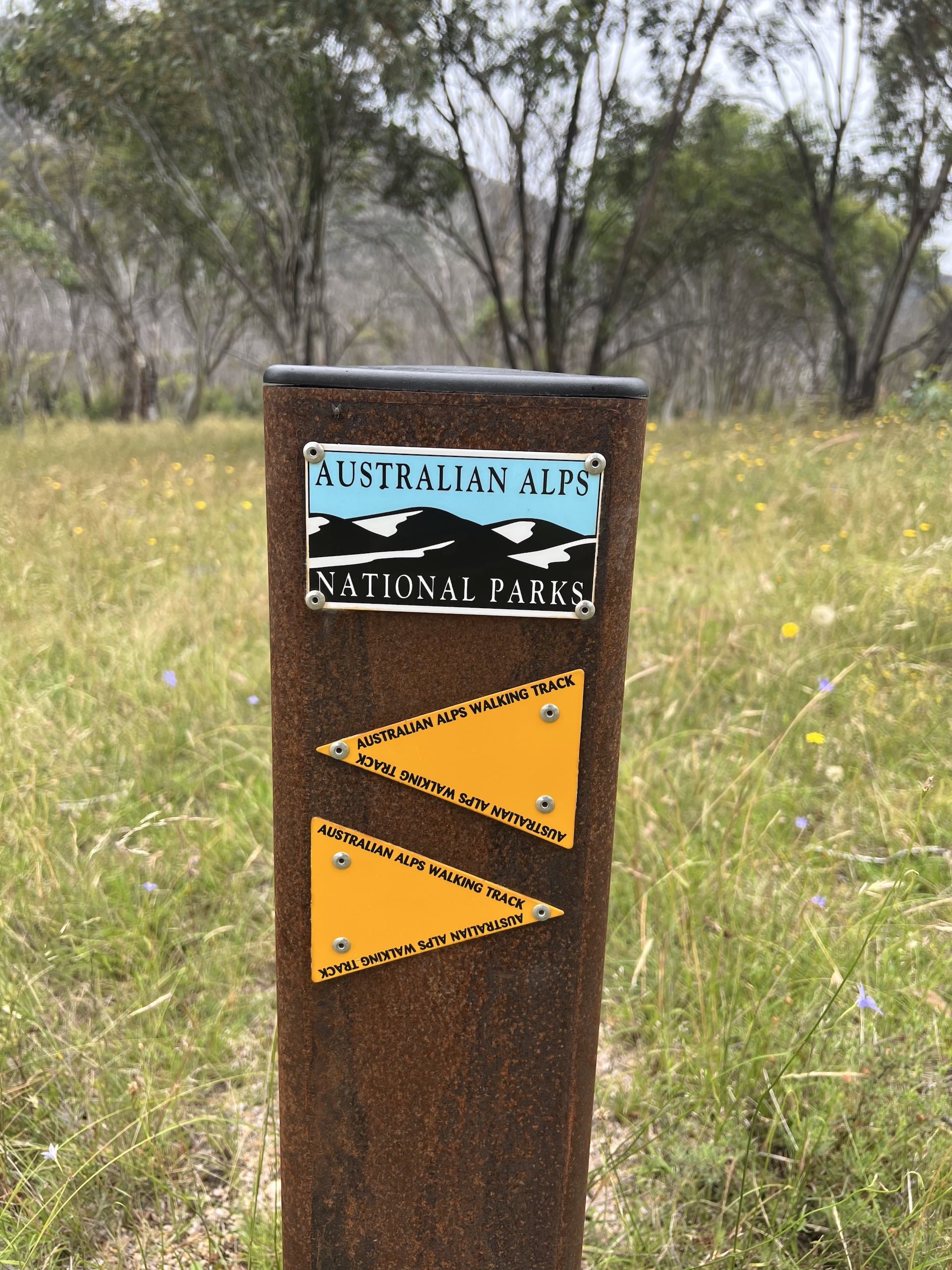





Mobile phone reception
Telstra provide the best coverage along the AAWT. Whilst not always guaranteed, we found that with Telstra we had service at some point almost every day (most consistently at high points and mountain passes). Occasionally, Optus had service where Telstra did not, and therefore if the best reception is desired, it might be a good idea to carry two sims (one physical and one eSIM if your phone has this capability).
Useful resources
- Chapman & Siseman guide book (this is an invaluable resource for planning).
- Facebook page (useful for recent track updates).
- Australian bushwalking forum (has some good information about track conditions and planning your walk).
- Reddit UltralightAus (good for potential gear ideas and joining the ultralight community in Australia).
- The Australian Alps National Parks page (includes current AAWT alerts and closures, although these updates can be outdated).
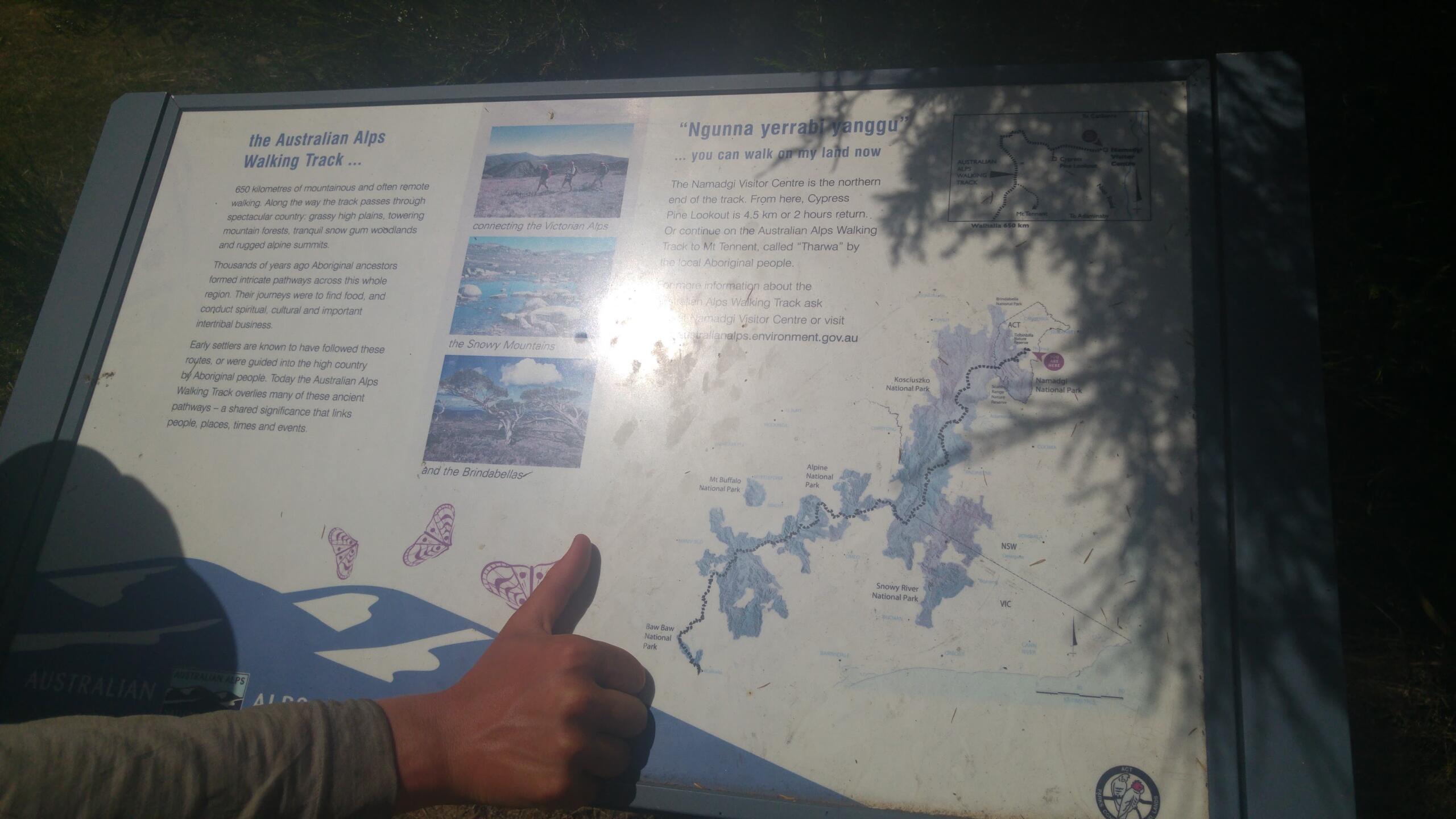


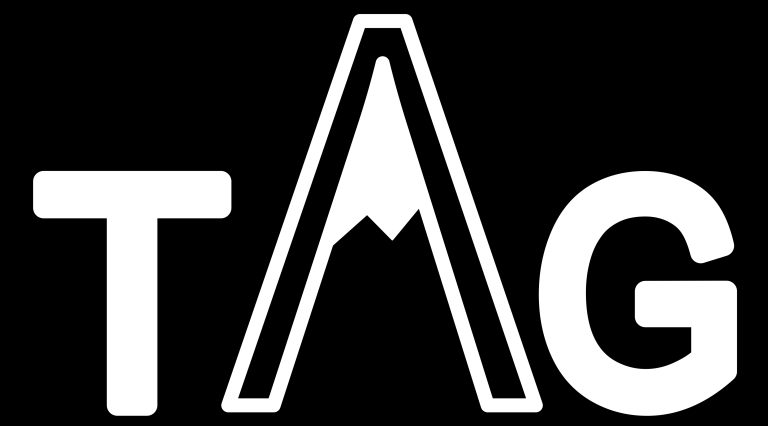
The General pub at Mt Hotham is pub, PO & small supermarket all in one. It is open 7days a wk all year. It’s approx 1-2km south of Hotham Heights located where majority of ski lodges are. I walked AAWT March April 2022 & pub staff confirmed PO accessible 7 days a wk as pub staff manage PO too. Great resource you’ve collated, well done.
Thanks! When we get back from the PCT we will update the post to add in this information 😀